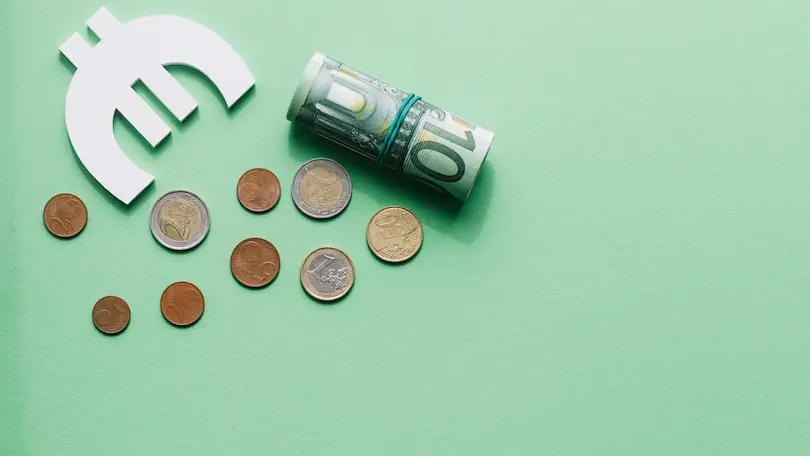When you trade on any kind of financial instrument, there are always costs involved. The good news for us is that Forex trading costs are small—if you know what you’re doing. If you follow these guidelines and understand the fee structure in Forex, you will be able to keep costs to a minimum.
Spread
Every time you buy and sell a currency pair, you pay the spread. In Forex, the spread cost is simply the difference between the buying and the selling price.
In the GBP/USD example above, you can see two rates separated by one pip. The last number in both is a pipette, which was described in the article "What is a pip?" If you enter a long trade, you buy the currency at the higher price (Ask) which in this case is 1.65927. When you want to close your position, it will close at a lower price (Bid). The spread is not always one pip - it changes depending on volatility and trade volume.
The spread is fairly low in our above example because this is a major currency pair that is traded frequently. If you want to keep the spread cost to a minimum, you should stick to the major currency pairs. Cross-pairs tend to have a higher spread.
Also, you are charged the spread every time you close a position. This is the profit that your broker makes every time you take a trade. It is irrelevant if your trade wins or loses. The broker will always pocket the spread. It’s simply the cost of trading on the Forex market.
Obviously, brokers love traders who overtrade and take lots of positions. Why? Every time you enter and exit a trade, they make money.
Also, the number of lots affects your trading fees with the spread. Let’s say you are trading a mini lot and enter a trade on USD/JPY. Each pip will earn you roughly $1, and we will say the spread is six pips. So, you’ll be charged $6 for this trade. However, if you trade five mini lots, you’ll be charged $30 for the trade (5 x $6).
Rollover
If you are in a trade and hold it after a certain time of day, you’ll either be charged or receive interest. This is known as a rollover. Whether you are credited interest or charged interest depends on which currency pair you are trading. You can check with your broker to find out exactly what time of day they rollover positions.
As I have explained previously, when you trade a currency pair, you are buying one currency and selling the other. Every day, your broker has to close out your trade day and open a new trade for you in order to keep it open. This happens automatically at the end of each trading day.
If you take a long position and buy the currency in the pair that has a higher interest rate in comparison to the one you sold, your broker will pay you interest. You may be asking, why?
Well, this is because you effectively own the currency you bought and are borrowing the currency you are selling. Alternatively, if you sell the high-interest currency and buy the low-interest currency, you have to pay your broker's interest.
On Wednesdays, brokers charge triple rollover, so watch out for that! It is important that you ask your broker about how their rollover works. Also, be aware that on some platforms rollover is called “swap”.
How to Calculate Rollover
Calculating rollover sounds complicated, but it is actually fairly straightforward. You need the following three pieces of information:
1. The exchange rate of the pair you are trading
2. The interest rates of both currencies you have traded
3. How much you have actually traded (e.g., lot size)
Now you can see how rollover works while in a trade. Imagine you take a long AUD/USD trade. That means you have bought AUD and sold USD. The currency exchange rate is 1.0386. The interest rate of the Reserve Bank of Australia is 4%, and the US Federal rate is 0.25%. In this case, you have traded on a standard lot of $100,000.
You then use the following calculation:
((lot size x (interest rate of currency bought – interest rate of currency sold ))/ (number of days in the year x current exchange rate) = rollover
So for your trade you’d do the following:
(($100,000 x (0.04 – 0.0025)) / (365 x 1.0386) = rollover
(($100,000 x (0.0375)) /379.089 = rollover
3,750 / 379.089 = $9.89
In this trade, you would make $9.89 in rollover interest swap. However, if you sold AUD/USD, it would be a different story. You would be charged $9.89.
That may seem like a lot, but it is very small when you consider you are trading $100,000 or one standard lot. Since one pip on a standard lot is worth $10, you have pretty much gained or lost only one pip, depending on whether you bought or sold the pair.
Hopefully, this example shows you the importance of rollover.
It can be useful if you commonly hold a trade overnight to write down the interest rates of currencies you trade most.
How to Avoid Rollover
If you still find rollover confusing or you don’t want to be charged rollover, there is a simple answer.
In order to avoid rollover, simply do not hold a trade during the time your broker initiates rollover. Also, since most brokers charge triple rollover on Wednesday, they don’t charge rollover on Thursday or Friday. You can sometimes take advantage of this by opening a trade on Thursday and, if you need to, holding it overnight until Friday.
You should always check how your broker applies rollover though, so you aren’t caught out!




Comment (0)